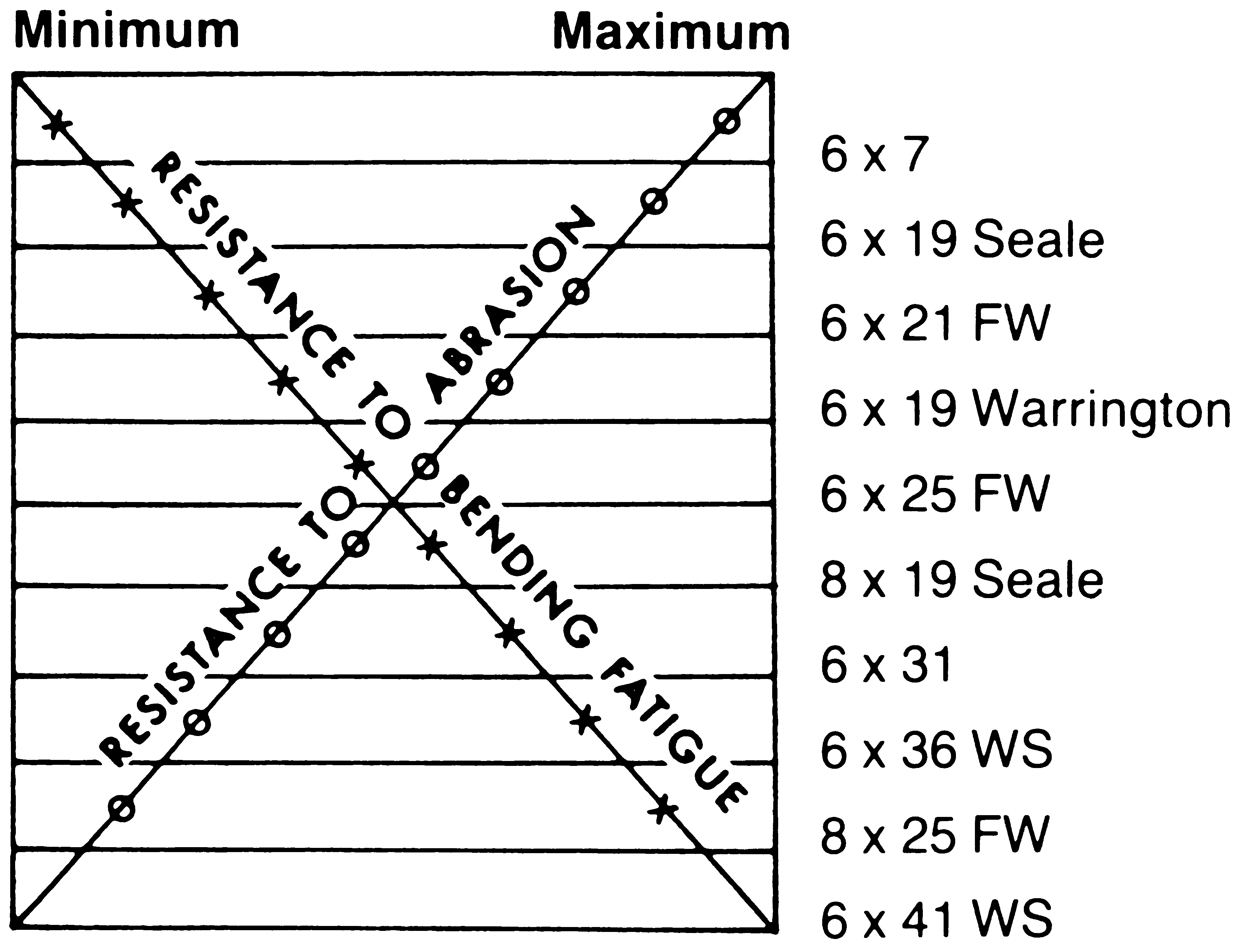WIRE ROPE SELECTION
Wire Rope Selection
Strength
Wire rope must have the strength required to handle the maximum load plus a design factor.
The design factor is the ratio of the breaking strength of the rope to the maximum working load. To establish the proper design factor, several operating characteristics should be considered:
- Speed of operation
- Acceleration and deceleration
- Length of rope
- Number, size and location of sheaves and drums
- Rope attachments
- Conditions causing corrosion and abrasion
- Danger to human life and property
Fatigue Resistance
Smaller wires are the key to bending performance when wire ropes are subjected to repeated bending over sheaves or drums. The more outer wires for a given size wire rope, the better the resistance to bending fatigue. The relative bending life factors of typical wire rope constructions are indicated in the following table.
Ropes having a large number of small wires, however, should not be used where overwrapping on a drum takes place because they do not provide sufficient crush resistance.
Abrasion Resistance
Lang lay and large outer wires provide resistance to abrasion. The relationship between abrasion resistance and fatigue resistance is illustrated below.

Crush Resistance
An IWRC (Independent wire rope core) and large outer wires will provide best crush resistance. Bridon American’s Constructex rope provides the best crush resistance of any wire rope.
Flexibility
Fiber core, lang lay and smaller wires provide a more flexible wire rope.
| Generally Accepted Design Factors | |
| Type of Service | Minimum Factor |
| Guy Ropes | 3.5 |
| Overhead and Gantry Cranes | 5.0 |
| Jib and Pillar Cranes | 5.0 |
| Derricks | 3.5 |
| Wire Rope Slings | 5.0 |
| Miscellaneous Hoisting Equipment | 5.0 |
| Ski Lift Ropes – slopes under 3,000 feet | 5.0 |
| – slopes over 3,000 feet | 4.5 |
| Haulage Ropes | 5.0 |
| Small Electric and Air Hoists | 5.0 |
| Rotation Resistant Ropes – Minimum | 5.0 |
| – Recommended | 7.0 |
| Hot Ladle Cranes | 8.0 |
| Elevator Hoist and Counterweight Ropes (Passenger) | |
| 500 FPM | 10.25 |
| 750 FPM | 11.15 |
| 1000 FPM | 11.55 |
| Relative Bending Life Factors of Typical Ropes | |
| Rope Construction | Factor |
| 6 x 7 | .57 |
| 19 x 7 | .67 |
| 6 x 19 S | .80 |
| 6 x 21 FW | .92 |
| Dyform-18 and 6 x 25 FW | 1.00 |
| 6 X 31 WS | 1.09 |
| Dyform-6 and 6 x 36 WS | 1.31 |
| 8 x 25 FW | 1.39 |
| 6 x 41 WS | 1.39 |
| 6 x 49 SWS | 1.54 |

